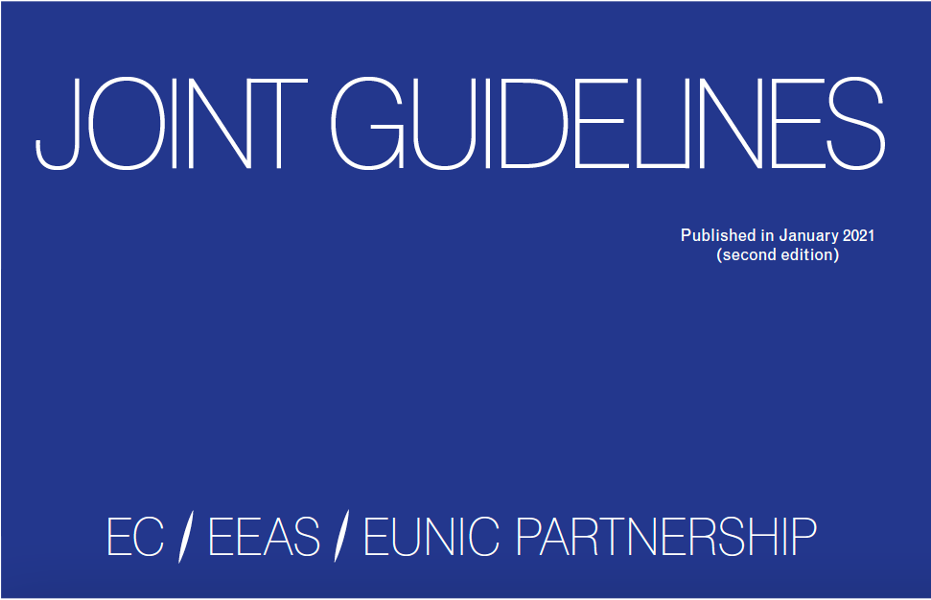
Partnership between EUNIC, the EEAS and the European Commission: Joint Guidelines updated
The recently reviewed Joint Guidelines advise colleagues working in EU Delegations and EUNIC clusters worldwide on how to effectively work together and offer a framework to strengthen and facilitate the partnership between the EU and EUNIC.

The second edition of the Joint Guidelines: EC - EEAS - EUNIC partnership has been published. This edition updates the first version of July 2019 and is a joint publication by the European Commission, European External Action Service and EUNIC.
What is new?
The guidelines are updated with:
- current data
- clearer reformulations
- more references to the area of development cooperation in cultural relations.
Download the Joint Guidelines here.
The Joint Guidelines are intended to provide a practical framework to strengthen and facilitate the partnership between the EU and EUNIC. They should advise colleagues working in EU Delegations, EUNIC clusters worldwide, the European Commission (EC), the European External Action Service (EEAS), and in EUNIC members’ headquarters on how to design effective working relationships in order to further enhance their cooperation and ensure synergies and complementarity in the delivery of cultural relations strategies and projects.
The guidelines include guidelines focusing on five chapters:
- Developing a shared strategic vision
- Developing a joint cultural relations training framework
- Professionalising the partnership
- Designing and implementing projects together
- Defining a monitoring and evaluations approach
They furthermore contain explanations of each party's roles and responsibilities, as well as annexes incuding models of financing, examples and template documents and best practices of coordination.
